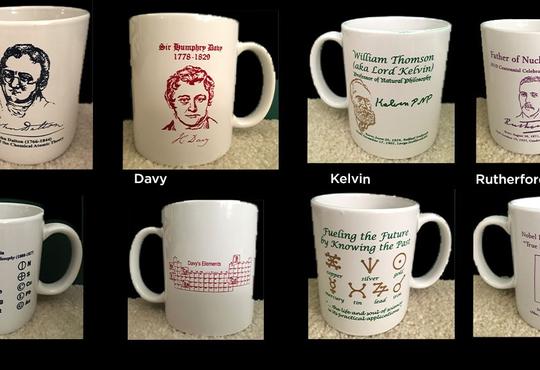Here's a quick activity that uses stoichiometry to identify an unknown substance. I start the kids with either sodium carbonate or sodium bicarbonate (labeled substance
A or B). The students measure out about 2 grams of their unknown substance and then record the exact mass of their reactant. Both substances react with hydrochloric acid to produce aqueous sodium chloride, carbon dioxide and water.
Here are the two chemical reactions:
Na2CO3(s) + 2HCl(aq) → 2NaCl(aq) + CO2(g) + H2O(l)
or
NaHCO3(s)+ HCl (aq) → NaCl (aq) + CO2(g) + H2O(l)
You can see right away where this is going... The mole ratio is either 1:1 for sodium bicarbonate to sodium chloride, or 1:2 for sodium carbonate to sodium chloride. The students treat their sample of the unknown carbonate with 3 M hydrochloric acid in an evaporating dish, using a watch glass to minimize splattering as the carbon dioxide bubbles up. Once the reaction is done, they heat the reaction mixture over the Bunsen burner to drive off the water. Any excess acid is also driven off with a thorough heating in the burner. When the reaction mixture is completely dried out, the only thing left is the salt!
This year, I did not give the students any instructions for figuring out their identification. I only asked that they justify their answer with calculations and an explanation. To my delight, the lab teams came up with several different solutions to this stoichiometry problem. One group decided to calculate the predicted mass of NaCl based on the amount of starting material; running the calculation for each of the two possible carbonate reactants. Another group worked backwards from the mass of NaCl produced to determine the mass of the reactant required, and then they matched it up with the mass of the starting material in the data. Another group converted both the starting material, and the salt into moles, and then used a modified ICE chart1 to compare the mole ratio. And yet another group used the formula M = m/n to calculate the molar mass of the substance from the experimental data, then they compared their answer to the molar masses of the two carbonates. I was so happy with my decision to leave the calculations section out the lab file because so much creative problem solving happened without even asking for it.
I'm not sure where this lab originated. I think that one of my colleagues used to do a version of this lab with his students. They used to treat a given amount of a known carbonate with HCl and make a prediction about the mass of NaCl formed. This was a good activity for practicing stoichiometry calculations, but it seemed a little flat. Adding in the unknown carbonate component elevated this activity to a "real" problem to solve using the mole ratio concept. The experiment gives very good results and it takes about one hour from start to finish, including calculations.
1. An ICE chart is a useful tool to solve equilibrium problems. It is a table set up to track concentrations — initial, change and equilibrium.







